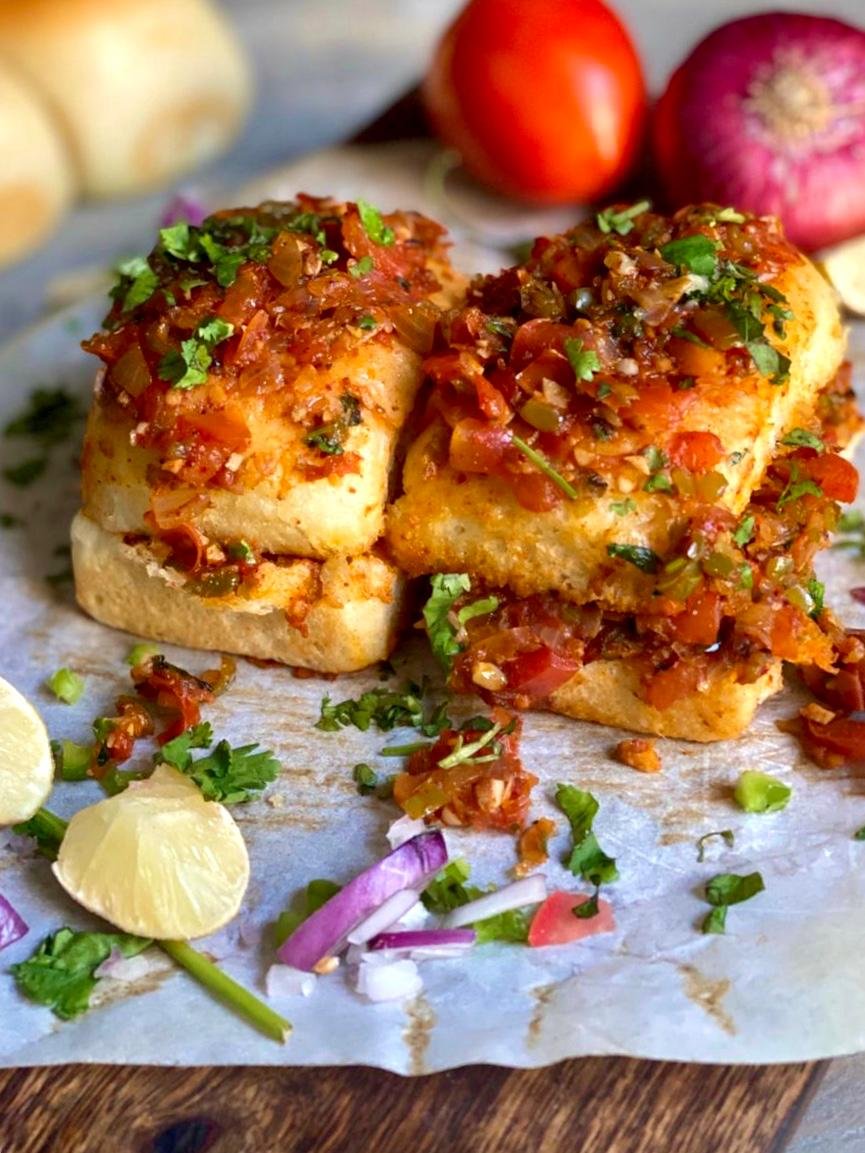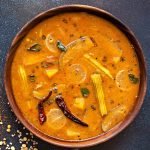Masala Pav – Maharashtrian Street Food At Its Finest!
Soft pillows of masala pav slathered in tangy, spicy, and aromatic Tawa masala. After Pav Bhaji, Masala Pav is the most popular Mumbai street food. This soft melt-in-your-mouth Pav is topped with fresh lime juice, chopped coriander leaves, and crunchy peanuts, then smothered in a spicy tomato-onion masala. There is nothing better than Mumbai’s masala pav for a spicy street snack.
There is nothing like spicy, mouth-watering Indian street food such as masala pav. Although much easier to make, it is a close kin of the more well-known Indian Pav Bhaji. It might confuse outsiders, but masala pav is not Pav Bhaji.
There is no end to the variety of street foods in India. Every state has its flavors and variety. There are many everyday dishes in India, but they taste different as you travel from one region to another. The dishes are flavored and twisted differently in every region. Masala pav is an example of this type of street food. The dish is spicy, buttery, and mouth-watering. In some cases, it is also eye-watering. It is a straightforward and quick recipe that only takes half an hour to prepare.
About Masala Pav
A masala pav makes a perfect appetizer when we’re all looking for ways to save money. There is nothing more delicious on the street than a masala pav. There’s no denying that this dish is a must-try.
There are very few ingredients in this vegetarian dish. To make this dish, you need onions, tomatoes, bread or dinner rolls, butter, and some spices. Despite its simplicity, this recipe is filling and can be enjoyed at any time of the year.
Tips and Suggestions
- To enhance its taste, prepare the masala pav on a Tawa.
- If you don’t want to use pav, you can also use bread.
- Make sure the veggies are finely chopped.
- Make sure you use Kashmiri red chili powder to get a nice red color.
- You can adjust the spices according to your preferences.
- For best results, serve it hot.
Story Time!
Pav can be traced back to the Portuguese invasion of Goa many years ago. While many of the Portuguese residing in India adopted the dietary habits of the Goans, they missed their daily diet of bread and meat.
According to Lizzie Collingham in Curry: A Tale of Cooks and Conquerors, visitors found settlers’ wives eating rice, mango pickles, fish or meat cooked in gravy with their hands!
As part of the hygiene regime, some even bathed every day and frequently washed instead of slathering on perfume to conceal their smell, as was common in Europe those days. There was, however, one thing they missed terribly, and that was bread. They did this not only for its taste but also for its role in their religious ceremonies.
However, the question was, how do you acquire yeast for baking bread? A thing like this wasn’t common in India at the time. Fortunately, it was a canny Goan cook who rescued them. Collingham writes that “the cooks fermented the dough using toddy with good results.” Collingham writes that “the Portuguese introduced the Indians to an array of European bakeries, making crusty white rolls as well as the sweet milk bread known as Pao de lo.”
In Goa, it traveled upward to Mumbai, probably due to enterprising Goans seeking work there. During the British period, the city thrived and became a center of commerce. Dr. Teresa Albuquerque, a writer-researcher for www.goacom.com, writes: “When faced with the challenge of eking out an existence, the migrants turned their skills to bread-making, and this profession remained a Goan monopoly for almost a century in Bombay.”
It is a fact that well into the 19th century, even after British food had made its way into India after the British invasion, many people considered Portuguese-Goan bread the best-leavened bread in the country. The author of Albuquerque writes that Vitorino Mudot, a native of Assagao in Goa, set up the first baker’s oven in the locality as the “Father of Goan Bakers in Bombay”.
Next, the Iranians entered the yeasty arena, and pav soon became a cheap (and delicious) food of the masses!







